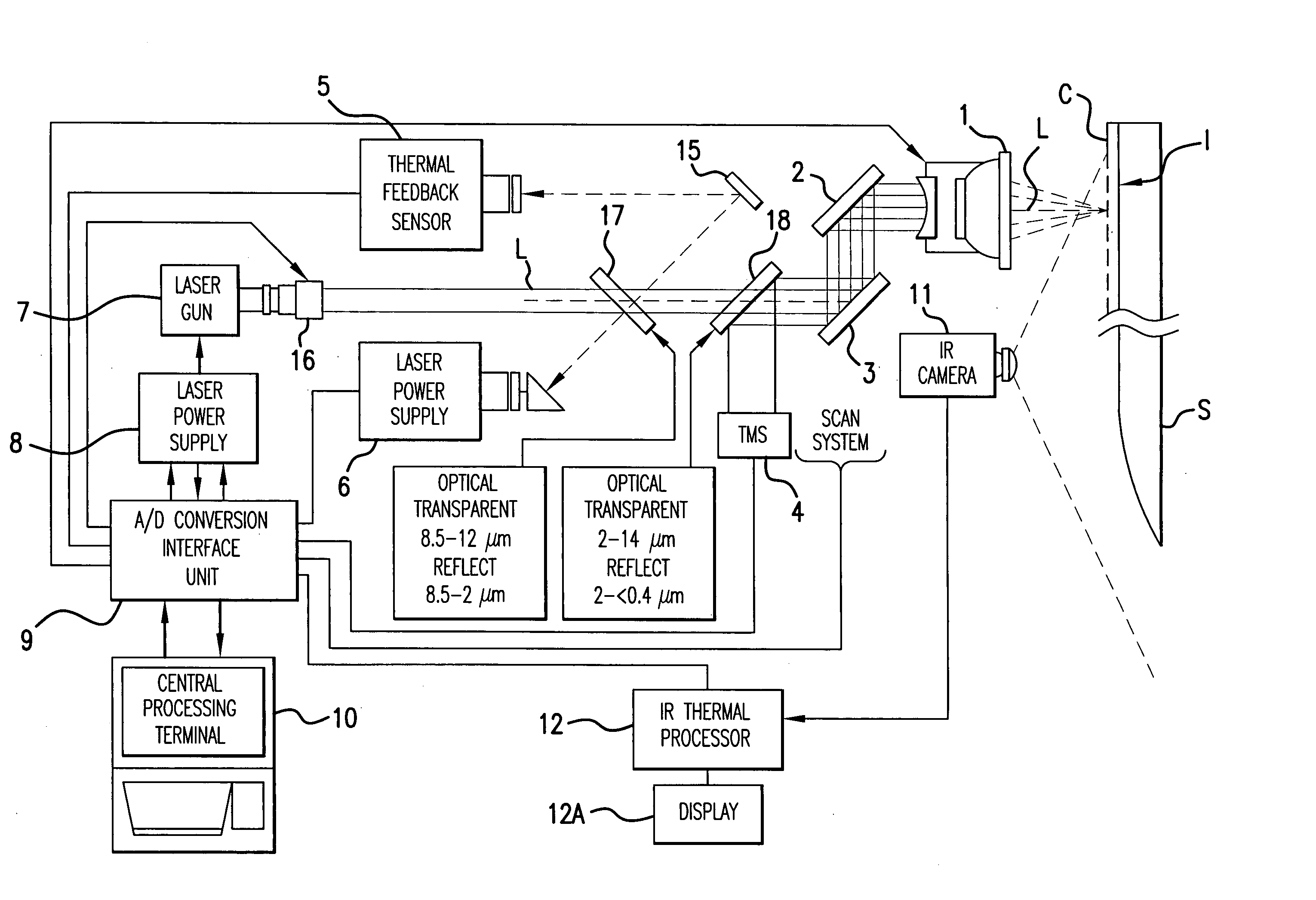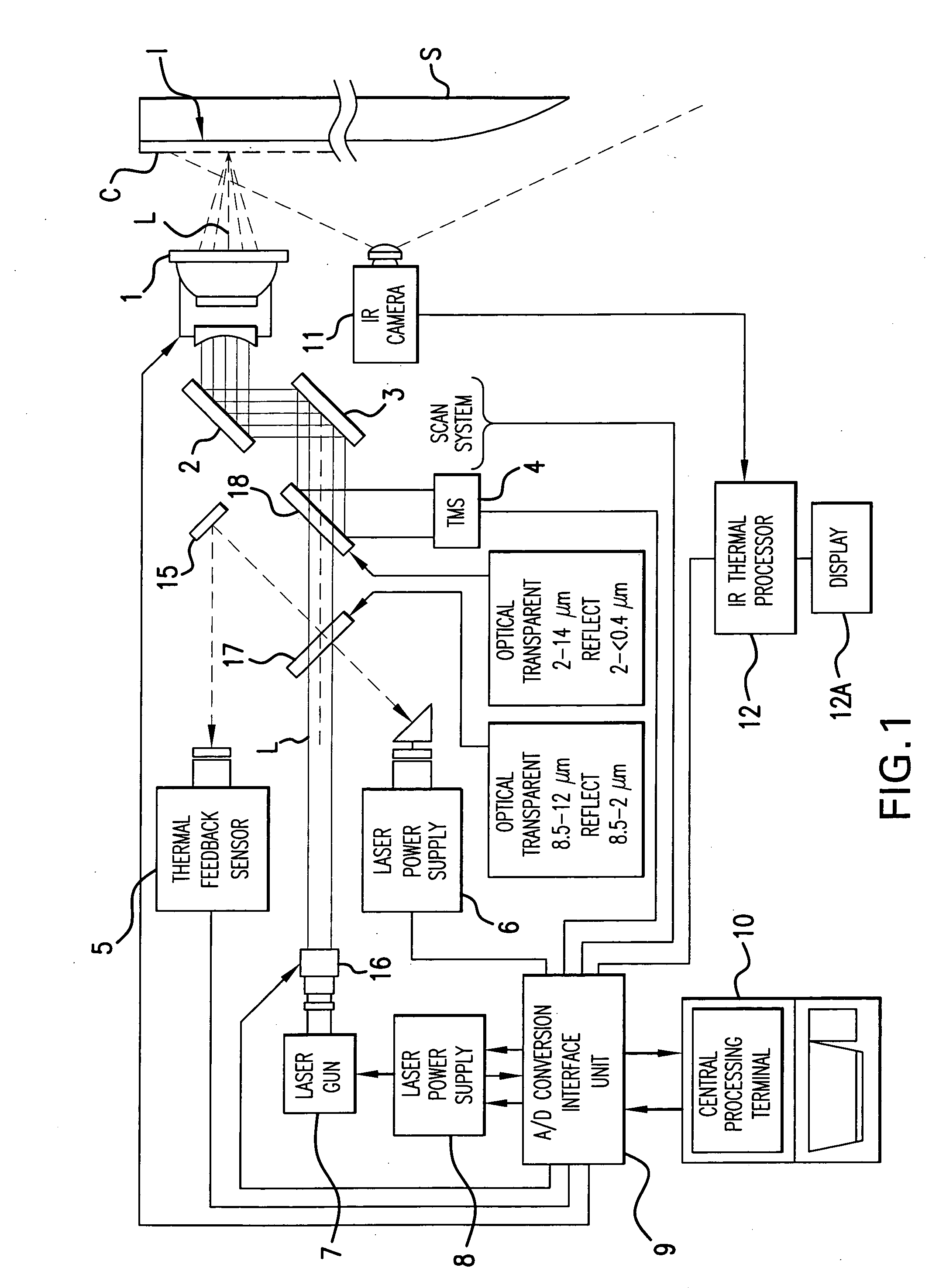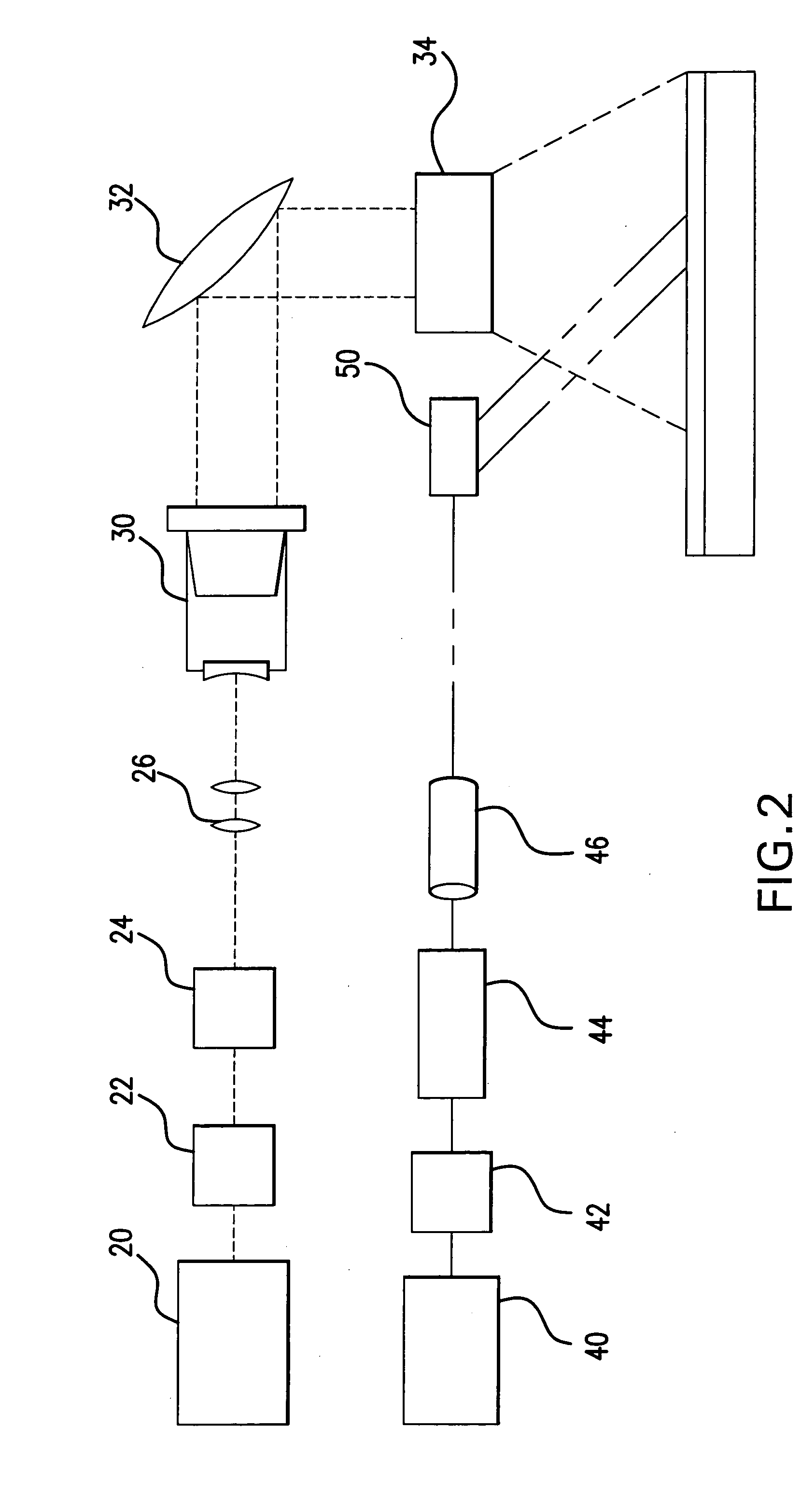Dual laser coating apparatus and process
- Summary
- Abstract
- Description
- Claims
- Application Information
AI Technical Summary
Benefits of technology
Problems solved by technology
Method used
Image
Examples
Embodiment Construction
[0021] Powdered coatings have a lower melt and upper melt temperatures. At the lower melt temperature, the powder begins to liquify and flow. At the upper melt temperature, the polymer structure of the coating begins to break down and are rendered useless. The difference between the upper and lower melt temperatures may be small and the difference between the optimum melt flow temperature and polymer dissolution temperature may be as little as two degrees. In the coating process, two lasers may be used. The first laser heats the substrate and coating to the lower melt point and a second, smaller laser having a more absorptive frequency further heats the coating.
[0022] In FIG. 1, a computer 10 controls the process, including the laser power supply 8 to the laser gun 7. A laser beam L emits from the laser head 16 and passes through two dichroic 17,18 before passing galvos 2, 3 and entering head unit 1 after which the laser L is directed at substrate S to melt the coating C. An IR cam...
PUM
| Property | Measurement | Unit |
|---|---|---|
| Temperature | aaaaa | aaaaa |
| Heat | aaaaa | aaaaa |
Abstract
Description
Claims
Application Information
 Login to View More
Login to View More - R&D
- Intellectual Property
- Life Sciences
- Materials
- Tech Scout
- Unparalleled Data Quality
- Higher Quality Content
- 60% Fewer Hallucinations
Browse by: Latest US Patents, China's latest patents, Technical Efficacy Thesaurus, Application Domain, Technology Topic, Popular Technical Reports.
© 2025 PatSnap. All rights reserved.Legal|Privacy policy|Modern Slavery Act Transparency Statement|Sitemap|About US| Contact US: help@patsnap.com



